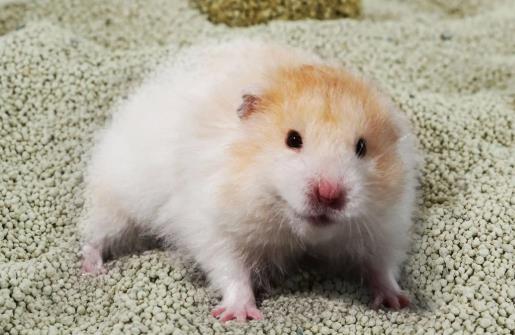Hamsters may eat their own bedding due to nutritional deficiencies, behavioral habits, environmental factors, or health issues. Below are the specific causes and corresponding solutions:

1. Nutritional Deficiencies or Unbalanced Diet
Protein Deficiency
Hamsters require large amounts of protein during growth, pregnancy, or lactation. If their daily diet is low in protein (e.g., being fed only grains), they may chew on bedding (especially fiber-rich paper or wood shavings) to supplement nutrients.
Solution: Increase intake of high-protein foods, such as mealworms, boiled egg whites, unsweetened yogurt, or specialized hamster food (containing sunflower seeds, alfalfa, etc.).
Mineral Deficiencies
Minerals like calcium and phosphorus are crucial for hamsters’ bone and tooth health. If these elements are lacking in their diet, hamsters may chew on bedding (e.g., lignin in wood shavings) in an attempt to obtain them.
Solution: Provide cuttlebones, mineral salt blocks, or specialized chew stones. Meanwhile, ensure their diet includes moderate amounts of vegetables (such as broccoli and carrots) to supplement minerals.
2. Behavioral Habits or Innate Tendencies
Teeth Grinding Needs
Hamsters’ teeth grow continuously, so they need to chew on hard objects to keep them trimmed. If no chewing tools (e.g., chew stones, apple sticks) are provided, they may use bedding as a substitute for grinding their teeth.
Solution: Place chew stones, apple sticks, or hard hamster toys in the cage to meet their teeth-grinding needs.
Exploratory Behavior
Hamsters are curious by nature and may chew on bedding to explore their environment or relieve boredom.
Solution: Add more toys to the cage (such as exercise wheels, tunnels, and swings), change the cage layout regularly to keep it interesting, and interact with the hamster for 10-15 minutes every day.
3. Environmental Factors
Inappropriate Bedding Choice
If the bedding is too soft (e.g., shredded paper), has a strong odor (e.g., chemical fragrances), or contains fine particles (e.g., corn cob dust), hamsters may chew on it due to discomfort.
Solution: Choose dust-free, unscented, and safe bedding materials, such as dust-free wood shavings, paper cotton, or corn cobs (after sifting to remove dust). Avoid using wood shavings from pine or cedar, as they contain aromatic hydrocarbons that may irritate the hamster’s respiratory tract.
Insufficient Cage Space
A cage that is too small or lacks a multi-level design may restrict the hamster’s movement, leading them to chew on bedding to release stress.
Solution: Use a basic cage with a minimum size of 40cm × 30cm, and add platforms, tunnels, etc., to increase vertical space, simulating a natural environment.
4. Health Issues
Dental Diseases
Problems like overgrown, broken, or infected teeth can make it difficult for hamsters to chew normally, causing them to turn to soft bedding instead.
Solution: Check the hamster’s teeth regularly. If overgrowth or abnormalities are found, contact a veterinarian for trimming or treatment.
Digestive System Diseases
Conditions such as gastrointestinal discomfort or parasitic infections may cause hamsters to develop pica (the urge to eat non-food items like bedding).
Solution: Observe if the hamster has symptoms like diarrhea or weight loss. If so, seek veterinary care promptly. Meanwhile, maintain cage hygiene by changing bedding regularly and disinfecting the cage.
5. Special Case: Accidental Ingestion vs. Intentional Eating
Accidental Ingestion
Hamsters may accidentally bite off small pieces of bedding while playing, or swallow a small amount while grooming their fur. This situation usually does not require excessive worry, but it is important to ensure the bedding is non-toxic and easy to digest.
Distinguishing Between Chewing and Eating
If the hamster only chews the bedding without swallowing it, it is mostly a teeth-grinding or exploratory behavior. However, if they frequently swallow bedding and show symptoms of indigestion (such as bloating or constipation), health issues should be a concern.
